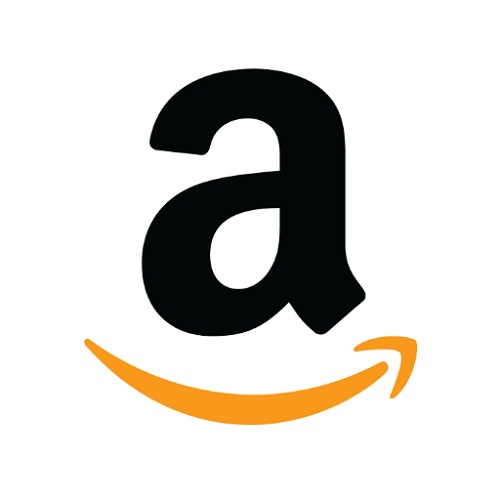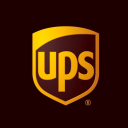How We Launched A $165K/Month Automated Home Growing Box
Hello! Who are you and what business did you start?
Hey! My name’s Bjorn Dawson and I’m a Co-Founder at Grobo. We make smart hydroponic growing systems that enable anyone to easily grow food and cannabis at home.
Our flagship products are the Grobo Premium and GroboSolid grow boxes. They’re roughly the size of a water cooler and designed to fit perfectly into any home. Our customers are generally cannabis consumers, either for medical or recreational reasons, that are looking for a consistent and high-quality supply of flowers. While many of them have never grown cannabis before, we do have some advanced growers who use our system to play with hydroponics for the first time.
Today, we’re making $165K per month and increasing quickly. After 18 months of fulfilling backorders, we finally caught up with the initial demand and have been able to build an inventory. This is now enabling us to bring on more sales channels each week to boost our sales. In addition, our systems require Grobo Nutrients to function. With more and more units coming online every day, we’re seeing our consumables revenue crossing the $10,000 per month mark and growing steadily.

What's your backstory and how did you come up with the idea?
I grew up in a family of entrepreneurs so it was always something I knew I would go into. My grandfather, for example, built some of the earliest satellite communication technology. Today, our phones can connect to satellites, but back then it required a $10M+ facility. He used entrepreneurship to develop something new and transformational that still impacts our lives today.
With my parents as entrepreneurs, I grew up understanding that lifestyle. Although they worked nights and weekends, they were always able to come to my afternoon soccer games and had significantly more flexibility in their life than most people do. That’s the life I wanted. The ability to pick what you work on, make an impact on the world, and choose when and how you do it.
I truly believe that anyone can become an entrepreneur, which is why I went into Mechanical Engineering at the University of Waterloo instead of going into a Business program. Within the first 6 months of being in Waterloo, I purchased a home to use as a rental property. It was the best investment I’ve ever made for two reasons. The most obvious reason is the financial return. Between rent and appreciation, the house net me over $25K/year for 5 years. The second reason is the gardens.
The previous owner had built multiple gardens around the home so I decided to try my hand at growing food in them. You truly have no clue how delicious a tomato can be until you try a homegrown one. With our Canadian winters, it didn’t take long before I was yearning to grow plants indoors, all year long. Unfortunately, there weren’t any great systems available to help me do that… and that’s when Grobo began.
As a second-year Engineering student, I began prototyping different ideas with Arduino and some basic automation. Eventually, this led to me having a mini greenhouse in my living room. I accidentally flooded it a few times, but we were onto something!

The first Grobo prototype

Grobo Pods, the product we worked on for the first 18 months
Grobo was founded with this mini greenhouse design in April 2014. Within only a couple of months, we had pivoted to make the system smaller. Customers simply didn’t have the space for the initial unit. Grobo Pods is what we would work on for the next 18 months until our pivot into cannabis.
One of the interesting parts about interviewing customers is that you have to ask the right questions. In our first surveys, our final question was “Would you buy this?”. We received nearly a 100% yes response rate. When we eventually tweaked the question to ask “Would you spend $200 on this?” which was the absolute lowest price we could ever make this product for, we received almost a 100% no response rate.
It was clear that the Return on Investment, or ROI, for customers as part of the purchase decision. Buying ahead of lettuce for $1 or growing a head of lettuce in a $200 system is just too big a gap. Cannabis, however, doesn’t have that problem. Today, we produce a system for $2,000 USD that pays for itself within 18 months, providing a massive ROI for our customers.
Everyone says that almost all great businesses pivot at least once. I never thought it would apply to us, but it did. Had we not switched our focus, I have no doubt that Grobo would no longer be operational today.
We didn’t charge nearly enough. When we finally had the product in production, we were losing hundreds of dollars on each order.
Take us through the process of designing, prototyping, and manufacturing your first product.
The Grobo Premium development process started while we were in Shenzhen, China at the HAX Hardware Accelerator. We had decided to pivot into the cannabis space only 2 weeks before moving to China so we showed up with an idea and the knowledge gained from designing the Grobo Pods, our first product that never launched.
China is an amazing place to prototype a product. Honestly, they can turn around most any custom components you need within 48 hours. On top of that, they have massive electronic markets filled with almost any component you could need for a product. That access to goods allowed us to quickly test many different designs.
We started by creating a basic Product Requirement Document (PRD) outlining what the product needed to do. Then, we began to prototype. Our first prototypes were built out of foam core boards to check our general assumptions of product size and how each of the components would fit together. Once we settled on an approximate form factor, we moved into laser cutting parts to get a bit closer to the design while having an industrial designer create renderings of what the finished product could look like. This whole process took about 5 months to complete.

From there, it took another 18 months to truly get into mass manufacturing. We opted to operate our own assembly facility which, in retrospect, slowed us down considerably. We spent a large amount of time and money on setting up our 11,000 sq ft facility. Learning how to make jigs, assembly procedures, hire assembly technicians, etc. We thought that producing in the house would lead to cost savings, but we struggled to track inventory properly and ramp up quickly enough. Today, we have moved all assembly to a contract manufacturing partner. They handle the ordering, assembly, quality control issues, inventory and more. That allows us to focus purely on marketing and R&D which are our strengths.
Describe the process of launching the business.
From 2014 to 2016 it was all about grants. From 2016 onwards it was all about investors since the government & pitch competitions were not yet ready for cannabis companies.
Within the first week of starting Grobo, we won a $5,000 pitch competition which provided the initial capital to start R&D. Only 3 months later, we won a $25,000 pitch competition and honestly thought we were rich. This was a huge amount of money at the time. We leveraged this to secure a government grant for another $30,000 and then another $30,000. Although Canada’s investing community is smaller than elsewhere, we do have good access to grants.
In late 2015, we were accepted into the HAX Hardware Accelerator and they invested $100,000 USD into Grobo. From there, we have closed millions of dollars from investors in Canada, the USA, and Hong Kong. With a product like ours, this funding was required to get us through the first years of R&D.
In late 2016, we revealed our product to the world, launching a crowdfunding campaign on our website. We worked with a PR firm that helped us get an article written by the Canadian Press. That article was syndicated to HuffPost, Mashable, and more. Within one month we had pre-sold nearly 400 units.
That was insanely exciting, but we would soon realize we made three critical mistakes:
We opened up orders to the world. Shipping to everyone wasn’t going to be possible. We eventually realized that and refunded all customers outside of Canada and the USA.
We promised we would ship much too early. It took us another year to begin shipping beta units and a total of 18 months to really start shipping.
We didn’t charge nearly enough. When we finally had the product in production, we were losing hundreds of dollars on each order. That’s not to mention all the scrap parts we ended up with and any returns we accepted.
Launching a pre-order campaign is an amazing way to gauge interest, but you must 100% know your actual costs before launching. Building in a buffer is even better!
Check out our launch video that was viewed millions of times:
Since launch, what has worked to attract and retain customers?
I personally lead our marketing strategy right now and we’re constantly testing new approaches to sales. There are a few key strategies that have worked really well for us:
Our community
This is the big one. Very early on, we started a community called allgrowers.com. It’s a place where anyone can talk about growing and where our growers help each other out. This is an uncensored community and gives prospective customers a great idea of what they can expect with a Grobo. We have seen huge growth over the past year as we ship more and more systems.

Customer Support
One of our values at Grobo is to enchant our customers with every interaction. By publicly listing our phone number on the website, and being available and as transparent as possible with our customers we have seen lasting relationships built. That’s why many of our existing customers have now bought their 2nd or 3rd systems!
Referral Campaigns
We use ViralSweep to run a referral campaign once or twice a year. Every time we run this, we see 5,000+ entries with a ton of customers sharing Grobo with their friends. We give away a Grobo each time so the prize is substantial and worth sharing. These campaigns have helped us boost our website traffic, YouTube subscribers, Social Media subscribers & engagement and our newsletter.
One thing that hasn’t worked well for us is trying to hack the system and switch our focus often. You need to produce good content and really care about your customers and audience. Ads work for faster growth but they’re expensive and if you’re focused on optimizing your on-site conversion rate (which we used to be) before you’ve got 1,000+ visitors each day it’s just not worth it. Focus on what moves the needle.

Some of the data from our latest referral campaign.
Processes are key. Make a guide for everything you do, and then it’s easy to pass off to someone else as you work yourself out of a job.
How are you doing today and what does the future look like?
We’re doing well and growing quickly. With COVID-19 ramping up, there will be some supply chain delays but our business is strong. We just had our best month ever and are closing out our first quarter with three profitable months!
We’ve hit this point where our first product is now stable. Customers can go online and have successful growth without ever talking to us. We still have some bugs to fix but it’s an incredible feeling to know that your product is out there and genuinely garnering 5-star reviews. We’re actually seeing more and more customers buy their second Grobos and our consumable sales are increasing month over month.
Internally, our team is working a lot on R&D. The software team continues to improve the current product and implement more advanced ways of processing hundreds of millions of data points we collect to improve plant growth. We’re still working to find a balance between the features our customers are requesting and the nitty-gritty background work that can greatly improve theirs grows. We never stop innovating which is what keeps us ahead of anyone else in this market.
As we look ahead at sales, we continue to bring on new retailers every week. At the moment, ~11% of our sales come through retailers, ~8% through Amazon and 80% are direct. We see huge growth potential in the retail channel moving forward.
Through starting the business, have you learned anything particularly helpful or advantageous?
I’ve learned to think about People, Process, and Money, in that order.
People are first. This includes our team, our customers, our suppliers, and truly anyone we cross paths with. We’ve had some extremely tough times over the years, but putting people first got us through them. A couple of years ago we had to let go of 10 people, half of our team. We worked with advisors who had led the BlackBerry layoffs. They helped us understand how to do this process in the best possible way. Fast forward a few months and ex-employees continue to chat with the team and support us and each other. In addition, our suppliers and even our landlord cut us a break on payment terms because we had always been open, honest and fair. They helped us when money was tight and today we help them by continuing to give them business.
Processes are key. Make a guide for everything you do, and then it’s easy to pass off to someone else as you work yourself out of a job. Even better yet, if you’re training someone get them to create the guide for that task. Having these playbooks allows you to make processes scaleable and focus your brainpower on what’s next, rather than on how to complete a previous task.
Lastly, money. It’s at the core of what we do, but I’ve truly found that if you take care of people and build processes that can scale, the money will soon follow.
Far too often I talk to prospective entrepreneurs and there’s always some reason that they don’t start their business. Maybe it’s not enough time, not enough money, wanting a co-founder, etc. Just start it.
What platform/tools do you use for your business?
There are a whole bunch of tools that we love:
Engineering Team:
Jira for task management. We no longer follow scrum methodology though since we found it to be too much overhead for a small team. We use a Kanban-style board.
Confluence for project requirements. It connects to Jira directly making it easy to kick off projections once they’re signed off on.
Marketing:
AHREFS for keyword research. Find those easy keywords with good search volume and go after them!
SurferSEO for page optimization. They check out all of the top pages for any keyword you want to rank for and then give you tips on how to improve your page.
Upwork for a ton of awesome contractors. We have video editors, graphic designers, proofreaders, writers, web developers and more.
Shopify is at the center of everything we do. Tobi (their CEO) and Harley (their COO) are both investors in Grobo so we’ve got a strong connection with them.
Loox Reviews - They automatically collect reviews and remind people to leave a review if they forget. Having photos attached to reviews makes them so much more powerful.
Wheelio is one of the most awesome apps. We see ~9% email conversion rates on our pages because of this gamified sign-up.
SchemaApp - We know this team well. They help Google understand your website and boost your search rankings. A must-have for every Shopify store.
CandyRack Upsell - We’ve tested a ton of upsell / add-on apps. This is by far the best one that easily fits into the flow of your store.
What have been the most influential books, podcasts, or other resources?
Talking to our advisors and investors is one of my favorite ways to get insights from people with a wide range of backgrounds. Advisors don’t need to be hugely successful already. Just talking to your peers about what Shopify apps they use, or which investors they like is great on its own.
In terms of books, there are a few I’ve enjoyed:
One Minute Manager - A simple introduction into how to manage well
Buyology: Truth and Lies About Why We Buy - A phenomenal insight into how marketing is truly all around us and how it plays on our psychology
Raving Fans - A quick overview of how to treat your customers right
Prediction Machines: The Simple Economics of Artificial Intelligence - I know Ajay Agrawal well and this is a great view of the future and how AI is going to change every business.
On top of the books, there are a few great blogs out there as well:
First Round Review - This is a VC’s blog where they interview a ton of their startups and provide advice across a range of topics.
GrowthHackers - I’ve been a subscriber of their newsletter for years. Every week they sent out ~5 marketing ideas and it’s great for keeping up with new marketing strategies and insights.
Advice for other entrepreneurs who want to get started or are just starting out?
What I love about entrepreneurship is that every day you get to learn something new from incredible people that you meet along this journey. These are three tips that have served me well:
Get started
Far too often I talk to prospective entrepreneurs and there’s always some reason that they don’t start their business. Maybe it’s not enough time, not enough money, wanting a co-founder, etc. Just start it. I founded Grobo alone and then brought on two co-founders in the following few months. Because I had already started the company, it was easier for them to see the vision and traction and to subsequently join the team. We quickly discovered that one co-founder was not a fit, we parted ways and kept moving forward. Our pivot into the cannabis space was also just an extension of our continued focus on making forward progress and trying new things.
Stay focused & start selling early
Being in the plant growing space, there are a TON of different applications for our technology. We could grow food for remote communities, automate larger greenhouses, build systems for growing plants in grocery stores, and more. Although we looked into some of these ideas, we’ve always remained focused on homegrown and it’s served us well. One of our competitors with significantly more funding than us tried to launch in three verticals and quickly went bankrupt because they had lost their focus. Do one thing well then move on to the next. This even applies to markets. When we initially began accepting pre-orders we wanted to ship worldwide. That’s very complex to do in hardware, which is why to this day we haven’t shipped outside of North America. We want to do this well first and then expand.
The second half of staying focused involves staying focused on sales. At Grobo, we did some marketing before our product was ready to ship, but we weren’t actively selling. In retrospect, I wish we had started selling grow tents and grow lights. This would have boosted our SEO & forced us to optimize our sales and support funnels earlier on. It would also have brought in an extra 2-3 years of revenue, helped us grow our audience, and gain new market insight.
Work yourself out of a job
As an entrepreneur, this is your ultimate goal. In the beginning, you’ll do everything. A jack of all trades. However, you won’t do it all extremely well and you can’t scale that way. One of my mentors told me this years ago and it rings true today. To grow your company, you need to keep working yourself out of a job. Do it so well that you can hire someone to replace you in it. Then learn and figure out the next item to tackle.
As you do this, don’t forget the 70/10/80 rule. Find someone who can do the job 70% as well as you. Teach them the next 10%, then be happy with 80%.
Where can we go to learn more?
If you have any questions or comments, drop a comment below!

Download the report and join our email newsletter packed with business ideas and money-making opportunities, backed by real-life case studies.

Download the report and join our email newsletter packed with business ideas and money-making opportunities, backed by real-life case studies.

Download the report and join our email newsletter packed with business ideas and money-making opportunities, backed by real-life case studies.

Download the report and join our email newsletter packed with business ideas and money-making opportunities, backed by real-life case studies.

Download the report and join our email newsletter packed with business ideas and money-making opportunities, backed by real-life case studies.

Download the report and join our email newsletter packed with business ideas and money-making opportunities, backed by real-life case studies.

Download the report and join our email newsletter packed with business ideas and money-making opportunities, backed by real-life case studies.

Download the report and join our email newsletter packed with business ideas and money-making opportunities, backed by real-life case studies.












































